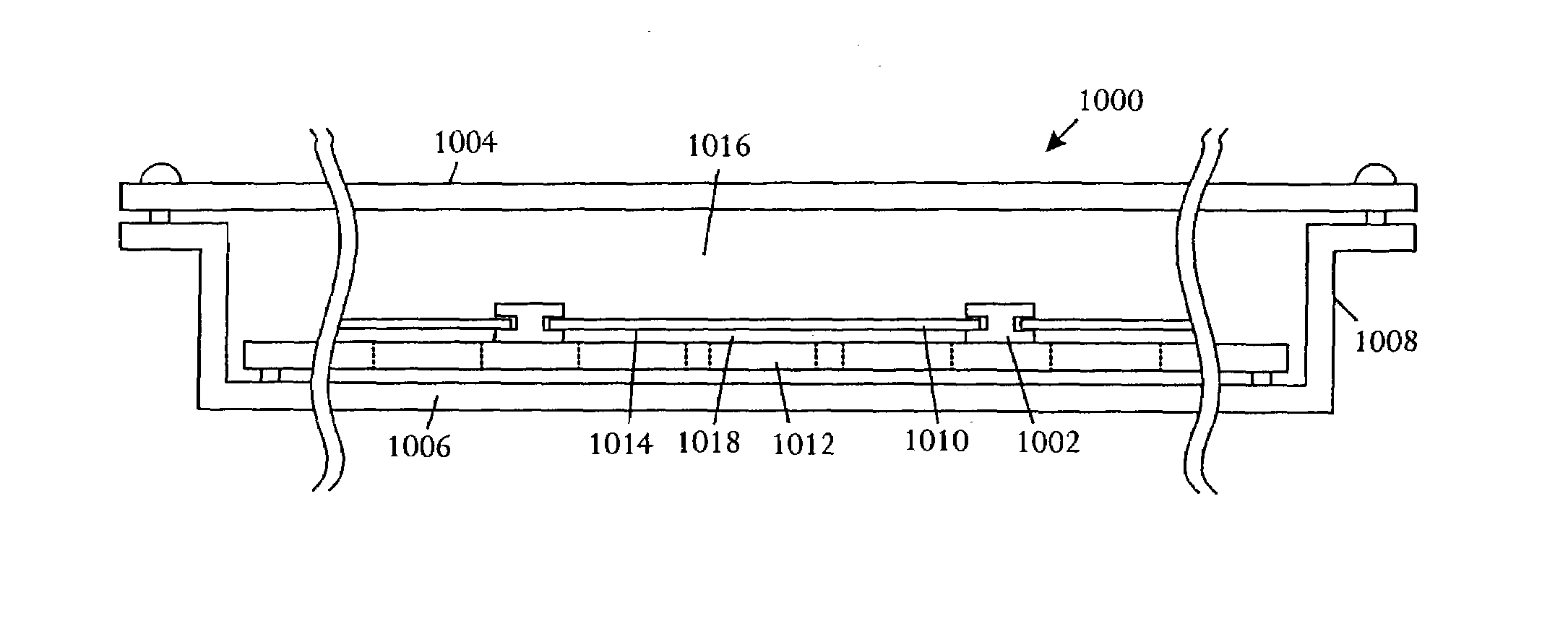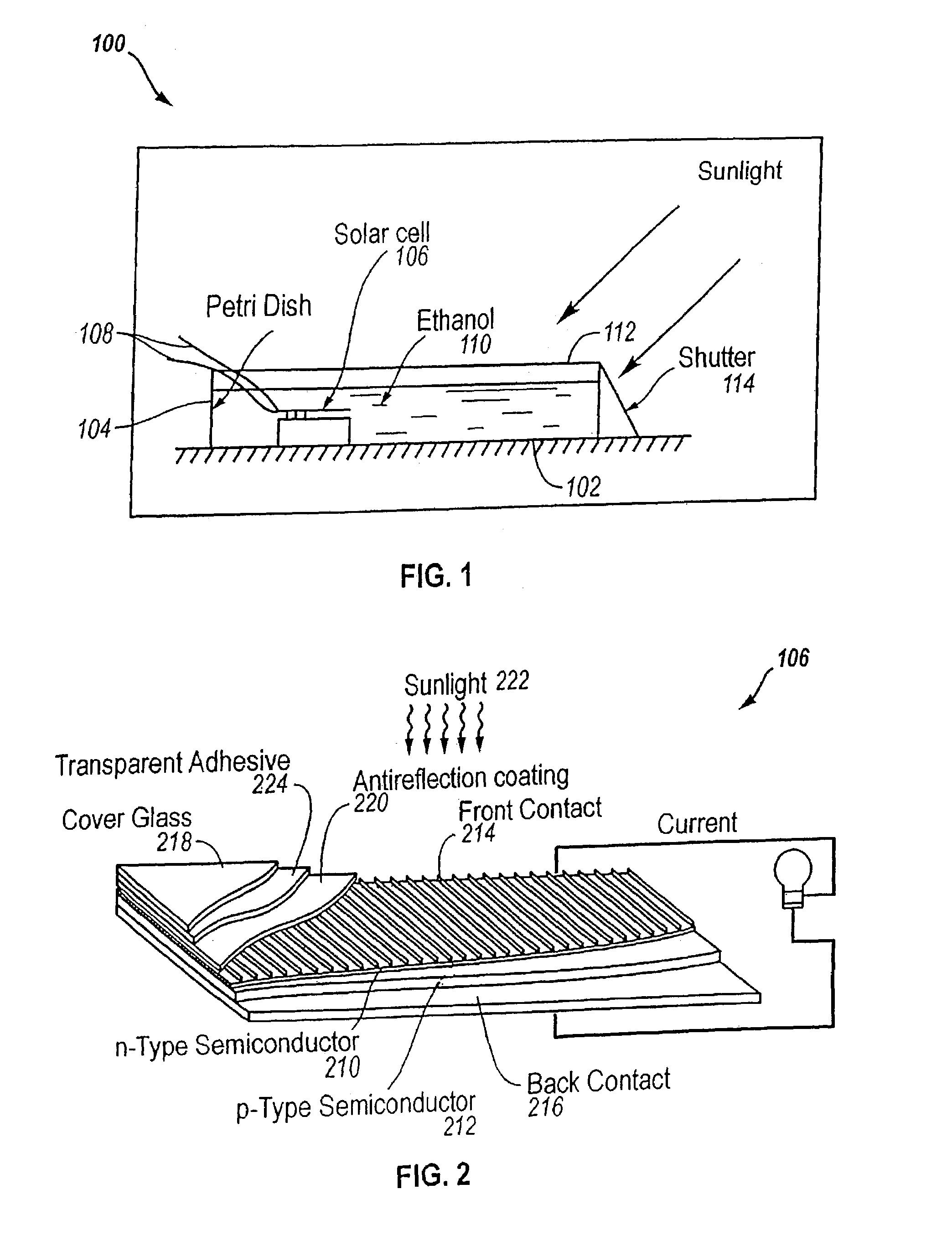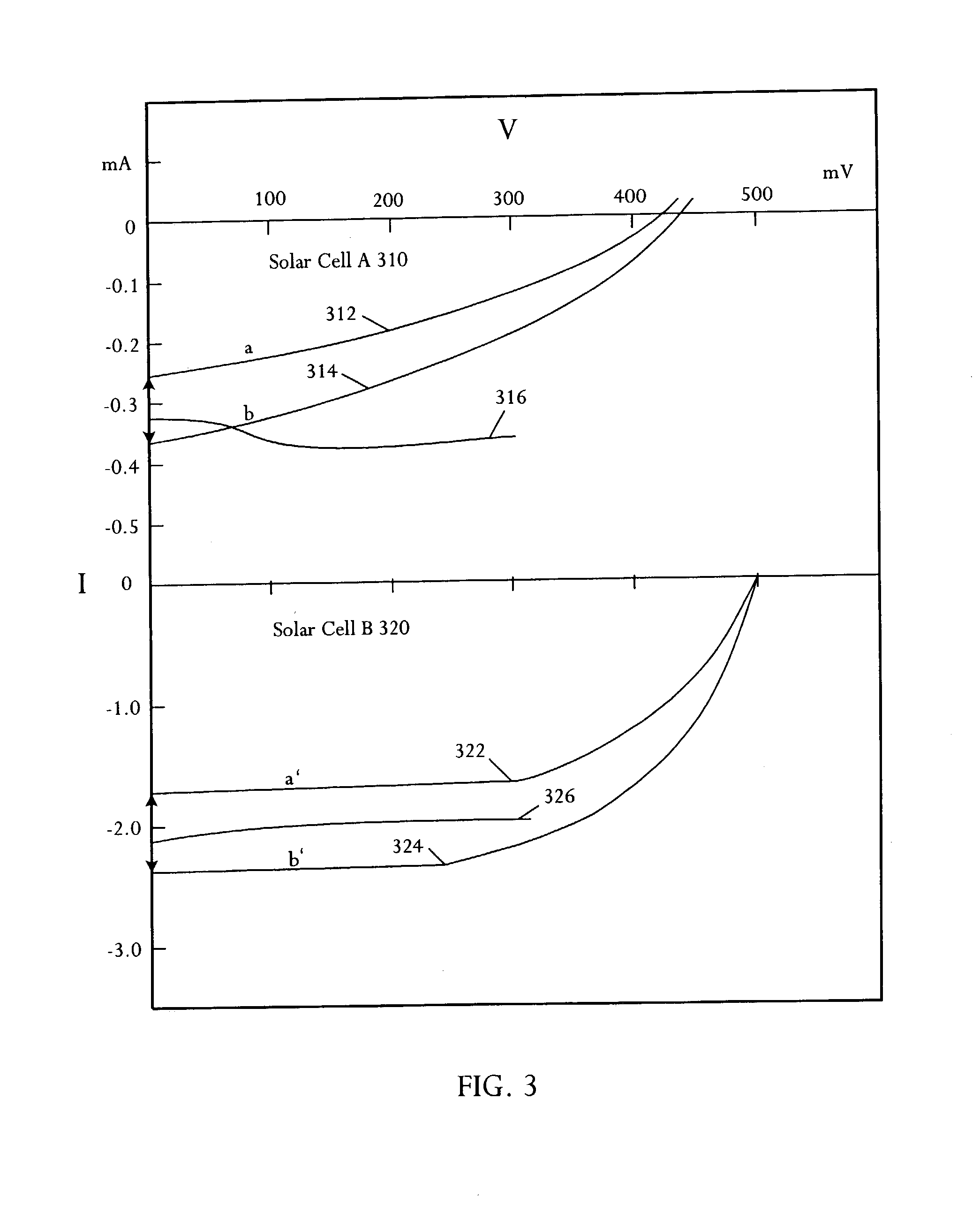Solar energy converter using a solar cell in a shallow liquid-gel layer
a solar cell and liquid gel technology, applied in the direction of photovoltaics, electrical equipment, semiconductor devices, etc., can solve the problems of low-cost electricity extraction efficiency, achieve the effects of enhancing light collection, increasing output current, and increasing operating efficiency
- Summary
- Abstract
- Description
- Claims
- Application Information
AI Technical Summary
Benefits of technology
Problems solved by technology
Method used
Image
Examples
Embodiment Construction
[0021]Referring to FIG. 1, a schematic block diagram depicts an example of a solar panel 100 in a suitable configuration for improving energy conversion efficiency. The solar panel 100 includes a panel base or tray 102 that forms a lower surface wall of the solar panel 100, and panel walls 104 on all sides of the solar panel 100. The solar panel 100 can have any shape. In one set of highly suitable examples, the solar panel 100 has the form of a low height cylindrical structure with the panel tray 102 covering one end of the cylinder and a panel lid 112 covering a second end of the cylinder. All or a portion of the panel walls 104 and the panel lid 112 are transparent to promote functionality as a light collector. The horizontal cross-section of the cylinder can have any suitable shape such as a circle, an ellipse, an oval, an egg-shape, a rectangle, a triangle, and a square. The cross-section of the cylinder can be symmetric or asymmetric. Generally a solar panel 100 with a simple ...
PUM
 Login to View More
Login to View More Abstract
Description
Claims
Application Information
 Login to View More
Login to View More - R&D
- Intellectual Property
- Life Sciences
- Materials
- Tech Scout
- Unparalleled Data Quality
- Higher Quality Content
- 60% Fewer Hallucinations
Browse by: Latest US Patents, China's latest patents, Technical Efficacy Thesaurus, Application Domain, Technology Topic, Popular Technical Reports.
© 2025 PatSnap. All rights reserved.Legal|Privacy policy|Modern Slavery Act Transparency Statement|Sitemap|About US| Contact US: help@patsnap.com



